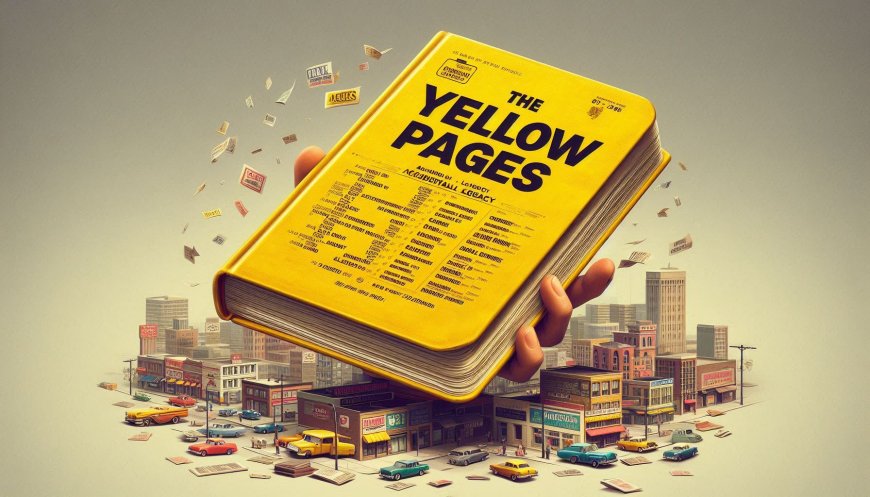The Accidental Legacy: How a Paper Shortage Gave Birth to the Iconic Yellow Pages
Discover the accidental legacy behind the Yellow Pages: how a paper shortage in the 20th century led to the creation of the iconic yellow business directory. Explore the unexpected origins of one of history’s most memorable directories.

In the late 19th century, phone directories were still a novel concept, and they were printed on the same white paper as the rest of the phone book. But one fateful day in Cheyenne, Wyoming, a small printing mistake led to a revolutionary innovation. When a local printer ran out of white paper during a routine phone book print run, they made a snap decision that would forever change how businesses connected with customers—they switched to yellow paper.
The Birth of an Icon
This improvisation, born out of necessity, created something unexpected. The yellow paper stood out distinctly from the regular white pages, making it easier for users to quickly find the business listings. What seemed like a simple workaround for a paper shortage became a defining characteristic of the Yellow Pages.
Not only was the yellow color visually distinct, but it also proved to be more comfortable for readers. The warm tone was softer on the eyes compared to the starkness of white, and this boosted the overall user experience. It wasn’t long before the publishers realized they had stumbled upon a game-changing idea. They officially branded the business section of the phone book as the "Yellow Pages," giving it a unique identity and making it a household name.
From Local Solution to Global Phenomenon
As the Yellow Pages grew in popularity, other publishers quickly followed suit. The yellow color became synonymous with business directories around the world, and the Yellow Pages brand blossomed into a symbol of reliability and comprehensiveness. For decades, it was the go-to resource for finding everything from plumbers to pizza shops, solidifying its place in homes and businesses alike.
The Yellow Pages' success wasn’t just about the color. The directory offered an organized, easily accessible way for consumers to connect with local businesses. It was an indispensable tool for anyone looking to find services quickly, and its simple, user-friendly design made it an icon of convenience.
The Digital Age and the Yellow Pages’ Evolution
Fast forward to the digital age, and the once-bulky directories faced a new challenge. As the internet became the dominant search tool, the need for physical phone books dwindled. However, the Yellow Pages brand adapted yet again. Recognizing the shift toward digital, they transitioned their vast directory of business listings online, maintaining their relevance in the modern world.
Today, though the physical Yellow Pages may be a relic of the past, its name still endures. Many still refer to online business directories as “Yellow Pages,” a testament to the brand’s lasting influence. The transition to digital platforms allowed the Yellow Pages to continue its mission—helping consumers connect with businesses—only now, it’s through a screen rather than a printed page.
A Legacy of Innovation and Adaptation
The Yellow Pages' journey from a happy accident in a Wyoming print shop to a global brand is a story of innovation and adaptability. It serves as a powerful reminder that sometimes, the most enduring inventions come from unexpected moments. What began as a solution to a paper shortage evolved into a cornerstone of business communication, and its legacy continues in the digital directories we rely on today.
Though the medium has changed, the spirit of the Yellow Pages lives on, proving that even in a fast-moving world, the power of a simple, bold idea can stand the test of time.
What's Your Reaction?








































































































